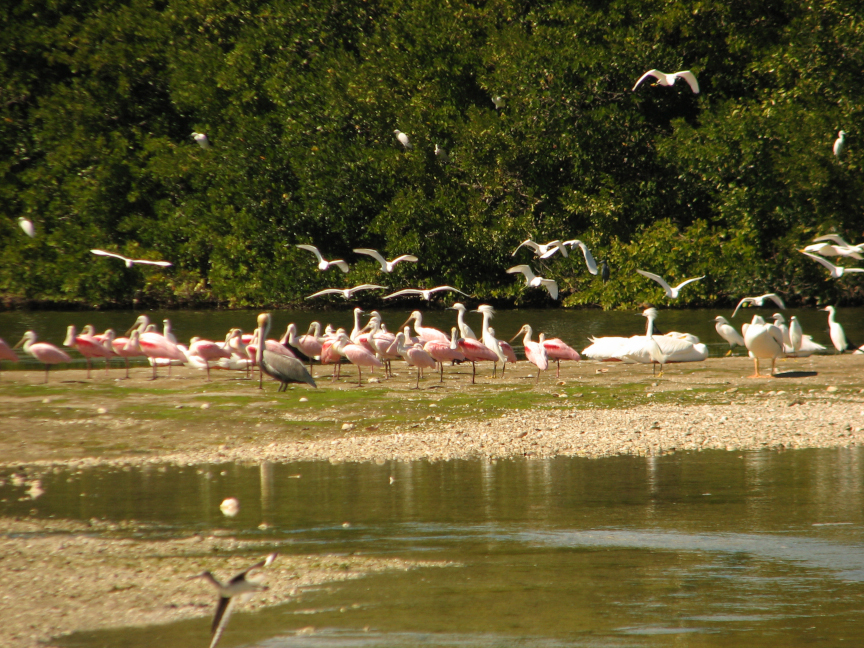One big reason we have been regular visitors to Sanibel Island is the J.N. “Ding” Darling National Wildlife Refuge (NWR). The Refuge is part of the largest undeveloped mangrove ecosystem in the United States. “Ding”, as birders around the world know it, was set aside in 1945 as the Sanibel NWR. It was renamed in 1967 for Jay Norwood “Ding” Darling, a conservationist and conservationist. He was a leader in blocking the sale of this land to developers prior to its designation as a Refuge. “Ding” now provides important habitat to more than 245 species of birds.

When we visit “Ding”, we first drive slowly through the Refuge on Wildlife Drive. The speed limit on this paved, four-mile, one-way road is 15 mph. This gives you plenty of time to check out the best bird viewing areas before circling through again to land in a prime spot. (No matter which pass you purchase to enter Ding, it’s good all day long for an unlimited number of trips through the refuge.)
It’s important to pass other vehicles in the left lane, if you must pass at all. You should stop and park on the right, on the shoulder if there is one, in order to avoid gridlock.
Planning Your Visit
You can find a detailed description of the Refuge and tips for planning your visit at: www.fws.gov/refuge/jn_ding_darling. Read the rules and regulations and the tips for what to bring to protect yourself from too much sun, extreme heat, and the dreaded “no-see-‘ems” you may encounter.
Review the American Birding Association’s Code of Birding Ethics to protect the wildlife and to ensure everyone enjoys the experience.
Great Florida Birding and Wildlife Trail
“Ding” is listed on the Great Florida Birding and Wildlife Trail. The Trail is a network of 510 premier wildlife viewing sites across the state. Descriptions of each site are contained in a series of colorful brochures that divide the state into sections. The South section shows many more good birding areas nearby—for Fridays, when the “Ding” is closed to vehicle traffic.
A checklist of birds specific to the Refuge is available at the Visitor and Education Center (FREE admission). There, you will also find detailed maps, the Nature Gift Shop, and a host of special events, such as book signings and talks by well-known birding and environmental experts.
In later blogs, we’ll touch on related topics like bird photography, other good viewing sites in the area (to visit on Fridays, you know), and what to do if you find a sick or injured bird.
